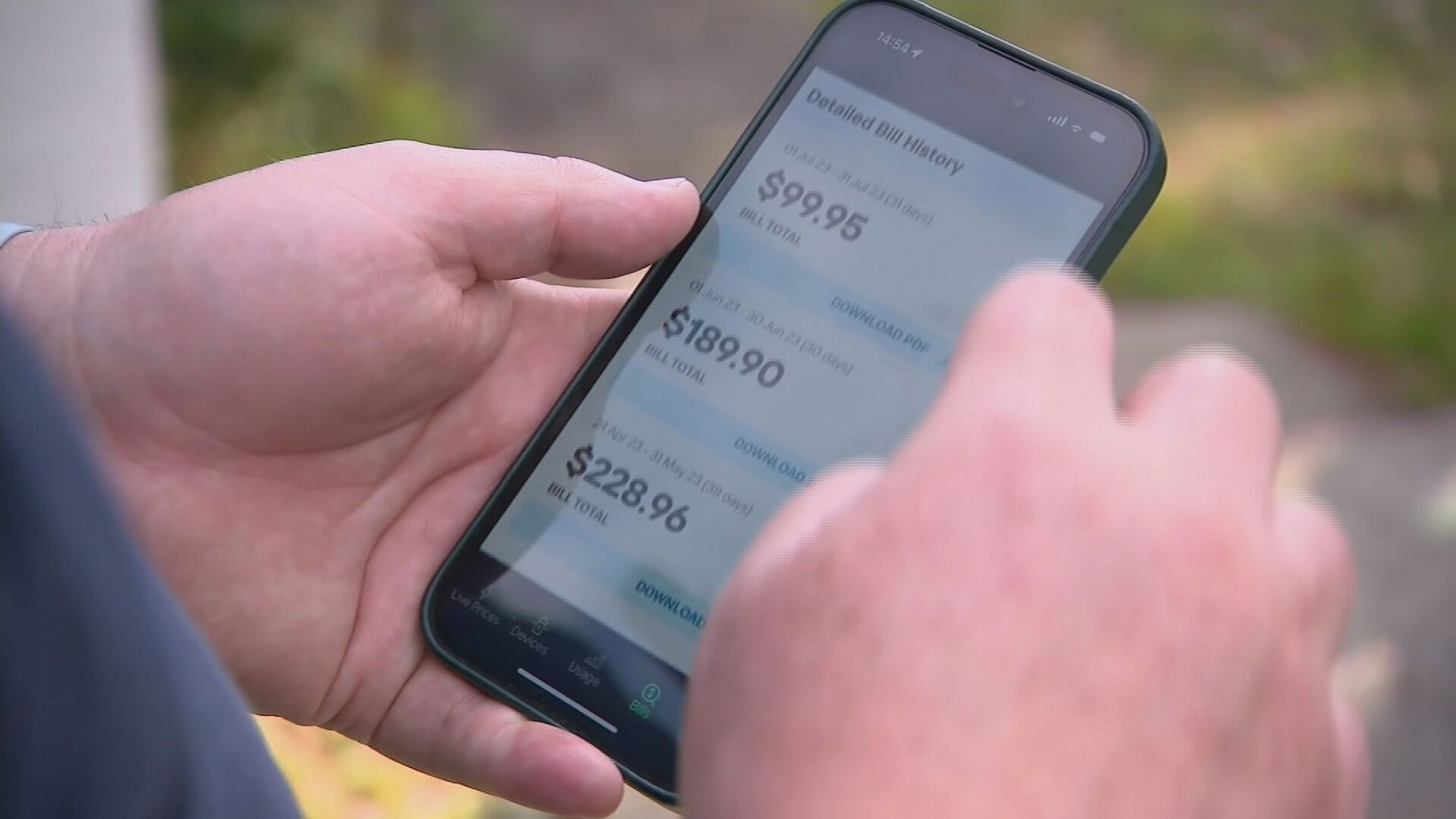Imagine if instead of getting a bill in the mail every month, you got a cheque.
That’s the reality for Sydney father Kurt McLachlan.
While in most Australian households, electricity bills are rising, his are going down. In fact, they’re non-existent.
“In April it was 220 bucks, then 190, then 99 and this month I’m on track to receive a $50 rebate,” McLachlan told 9News.
For the last five months, McLachlan has been using Amber Energy – a provider offering access to wholesale electricity prices.
As an Amber customer, he also receives wholesale feed-in tariffs – a whopping 34 cents per kilowatt hour.
“That’s when solar has been at its worst,” he said.
“When we get the peak solar, I’ll go from a $20 to $50 rebate to $500 or $600 a month.”
What does wholesale energy mean?
In simple terms, here’s how the traditional energy model works.
First, energy is generated – either by coal and gas or through green energy like solar and wind – and enters the grid.
Then, retailers buy it at wholesale prices and sell it to customers at a cost designed by the provider.
But Amber removes the middle step, giving customers access to wholesale energy prices.
Amber also charges a monthly subscription fee of $19.
“Wholesale prices are actually falling and have fallen over the last year even though those retail prices have gone up by about 25 per cent for most customers,” Chris Thompson, co-CEO of Amber, told 9News.
Wholesale prices change every half hour based on the supply and demand of energy.
When demand is high – usually in the mornings and early evening when people are home – prices rise.
And when demand is lower and there’s a surplus of clean energy – often in the middle of the day – prices dip.
Using the Amber app, customers can track prices and make decisions on when to use power to maximise savings.
“It creates an option for people to take advantage of that and make it cheaper for themselves,” Thompson said.
Amber also offers software which automates home batteries to buy energy when prices are lowest and sell when they’re highest.
“People can charge up when it’s cheap and green and then discharge and beat generators at their own game at those critical times,” Thompson explained.
“We’re seeing lots of customers with feed-in tariffs of 40 to 50 cents per kilowatt hours, which is about ten times what you see with regular feed-in tariffs,” he said.
What’s the catch?
While accessing the wholesale market can be cheaper, you are subjected to fluctuating prices.
If wholesale energy spikes – so does your bill.
“We’ve got protections in place to make sure we guarantee customers never pay over a certain price in a given quarter to be able to offer that sort of security and peace of mind,” Thompson said.
There are benefits to households who don’t have solar or batteries, however the perks are greater if you do.
“It looks good on paper but if you’re not ticking all the boxes, it may not be right for you,” Compare The Market’s Philip Portman told 9News.
While Amber does offer energy below the default market offer, Portman said it pays to explore your options.
“Right now, Glowbird is offering a plan which is 18 per cent below the default offer, there’s Ampol which is about 17 per cent and Origin which is also around 17 per cent,” he said.
The information provided on this website is general in nature only and does not constitute personal financial advice. The information has been prepared without taking into account your personal objectives, financial situation or needs. Before acting on any information on this website you should consider the appropriateness of the information having regard to your objectives, financial situation and needs.






